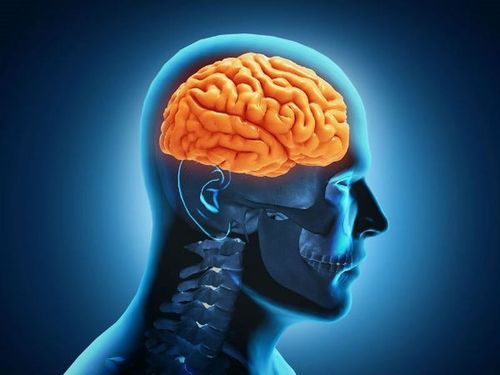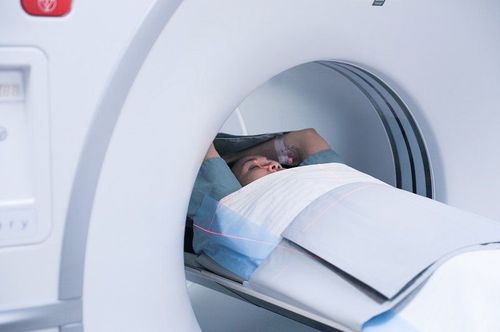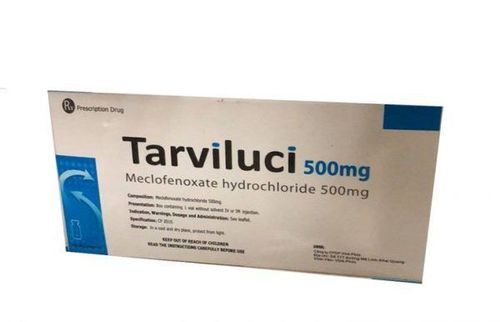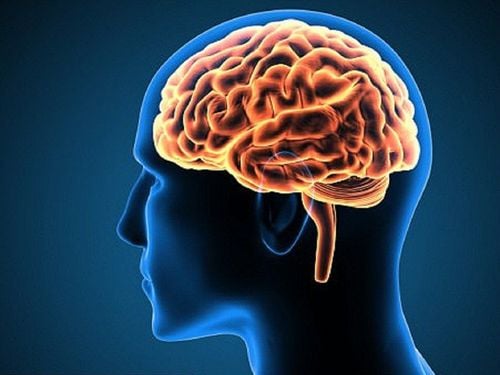This is an automatically translated article.
The article was professionally consulted by Dr. BS Ton That Tri Dung - Head of Department of Medical Examination & Internal Medicine, Vinmec International Hospital Da Nang.Vascular stroke is common in people with diseases such as hypertension, diabetes, dyslipidemia, obesity. The disease occurs due to atherosclerosis, which narrows the lumen of the artery, making it easier to form blood clots, causing blockage.
1. What is a cerebrovascular accident?
A cerebrovascular accident (stroke) is an injury to the brain that occurs when the blood supply to the brain is interrupted or significantly reduced. The brain is starved of oxygen and nutrients, and brain cells begin to die within minutes. Stroke is divided into 2 types:
Ischemic stroke: Caused by a blockage of an artery, which accounts for about 85% of all strokes. Many strokes of this type remain unexplained. The most common types of ischemic stroke are: Thrombotic stroke: A blood clot (thrombus) forms in an artery in the neck or brain. These arteries can have fatty deposits at the clot that causes it to grow and form plaques that block the blood vessels. Embolic stroke: A blockage caused by a blood clot that forms somewhere in the body (usually the heart) that travels to the brain. A common source is an irregular heartbeat in the upper two chambers of the heart that causes atrial fibrillation, which can cause blood clots to form. Hemorrhagic stroke: Hemorrhagic means bleeding. This type of stroke is caused by a leak or crack in a brain artery. These cracks can be caused by an aneurysm (a thin and weak area on the artery wall) or by a malformation of the cerebrovascular system. About 15% of strokes are caused by bleeding in the brain.
2. Thrombosis in ischemic stroke
Under normal conditions, the vascular endothelium has anticoagulants that prevent platelet adhesion and activation of coagulation factors. When the lumen is damaged, it activates platelets and coagulation factors.
Activated and adherent platelets release numerous cytokines and surface complexes to interact with activated coagulation factors. In blood clot formation, thrombin plays a central role, as a bridge between platelet activation and coagulation.
When the fibrin-platelet network is formed, it will hold red and white blood cells from which to form blood clots. Blood clot progression depends on the balance between coagulation and thrombolysis. If the clotting process is stronger, more clots are formed and there is a higher chance of occlusion of the blood vessel.
3. Coagulation - Blood lysis, two parallel processes exist in blood clot formation and brain hemorrhage
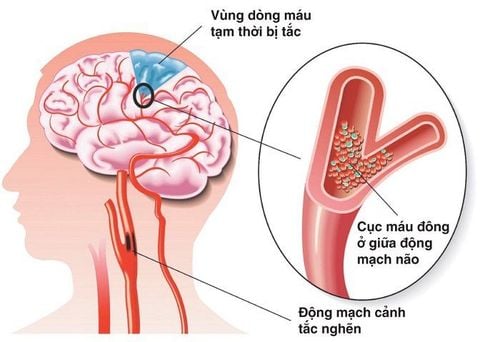
3.1 Blood clotting
There are more than 30 factors involved in the blood clotting process, going through the following stages:
Vascular phase: As soon as the blood vessel is damaged, the vessel wall constricts according to a reflex mechanism. Platelets gather there to form a knot called a white blood clot, the platelets stick together and secrete certain factors that initiate the clotting process, this is called the hemostasis phase. In this phase, platelet factor V is involved in platelet adhesion, factor VI has a vasoconstrictor effect, and factor IX reduces capillary permeability. Plasma phase : Is a complex phase conducted in blood vessels with the participation of many factors. This stage undergoes thromboplastin formation, formation of thrombin which acts on fibrinogen and finally formation of fibrin fibers (fibrin). Thrombocoagulation phase: Includes the stage of blood clotting and thrombolysis. After the clot persists for about 3-24 hours in the absence of infection, the constant temperature of the clot will gradually decrease and dissolve due to the degradation of plasmin which is regulated by a number of stimulants and inhibitors. regime. The coagulation mechanism is very complex and includes two pathways: the contact-activated pathway (also known as the endogenous pathway) and the tissue factor pathway (the exogenous pathway). Both pathways lead to activation of the common pathway of coagulation factors such as X, thrombin, and fibrin.
The main role of the tissue factor pathway is the formation of more thrombin.
The contact activation pathway begins with initial complex formation on the collagen matrix of the damaged vessel wall by macromolecular kininogen, prekallikrein, and factor XII (Hageman factor). Prekallikrein is converted to kallikrein and von-Willerbrand factor
Common pathway : Thrombin factor has many different functions. Its primary role is to convert fibrinogen into fibrin - the main material of blood clots.
3.2 Thrombolysis
Thrombolysis is the breakdown of fibrin bonds by plasmin. Plasmin that is formed in the circulation degrades both plasminogen in the blood and at the thrombus into soluble substances. The precursor to plasmin is plasminogen circulating in the blood which is an inactive enzyme.
To convert plasminogen into plasmin requires the participation of substances with plasmin activator function. However, these substances are inhibited by plasminogen activator inhibitor (PAI) and alpha 2- antiplasmin - which inhibits nascent plasmin formation. For thrombolysis to occur, plasminogen activation must be stronger than inhibition by PAI and alpha 2- antiplasmin.
In thrombus, plasminogen is attached to fibrin and platelets. This structure deprives the binding site of alpha 2- antiplasmin to allow more efficient binding of plasmin to the thrombus.
4. Prevention of cerebrovascular accident
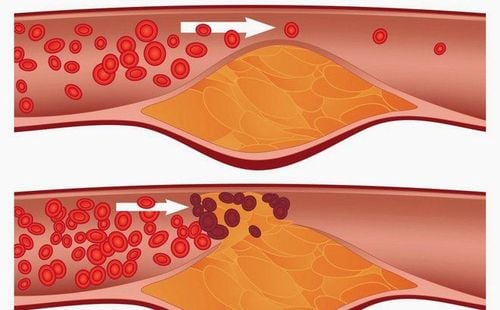
Treatment of factors that increase the risk of cerebrovascular accident: hypertension, diabetes, cardiovascular disease, dyslipidemia Follow a low-fat, low-salt diet (THA), reduce starch, sugar (diabetes). Instead, patients should eat more green vegetables, exercise 30 minutes a day, stop smoking, alcohol, avoid obesity. Periodic re-examination and treatment according to the doctor's instructions When there are signs of stroke, it is necessary to be hospitalized immediately for effective treatment and to limit the occurrence of complications. In cerebrovascular accident, emergency and prompt treatment are very important. If the golden period is over, the patient's likelihood of complications may be higher. The technique of treating cerebral artery thrombosis has been applied at Vinmec Da Nang International General Hospital to increase the chances of treating patients with cerebral infarction in particular and thrombotic diseases in general.
The technique is performed by experienced and professional doctors:
Dr. Spider due to rupture of cerebral aneurysm Cerebral infarction due to occlusion of a large cerebral artery. Brain hemorrhage due to brain vascular malformations The outstanding advantage of that method is the use of magnetic resonance imaging (MRI) 3.0 and a 640-segment CT scanner for interventional techniques to remove cerebral artery thrombosis.
Please dial HOTLINE for more information or register for an appointment HERE. Download MyVinmec app to make appointments faster and to manage your bookings easily.





